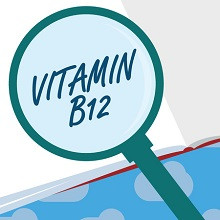Cobalt and Vitamin B12
Elevated urinary cobalt concentrations identified in routine doping controls can originate from vitamin B12

Publication
Knoop, A., Görgens, C., Geyer, H., & Thevis, M.
Elevated urinary cobalt concentrations identified in routine doping controls can originate from vitamin B12.
Rapid Communications in Mass Spectrometry 2020 Apr 15;34 (7)
Summary
In 2015, cobalt was added to the World Anti‐Doping Agency's (WADA's) Prohibited List, and the use of products resulting in the uptake of pharmacologically relevant amounts of inorganic cobalt has been banned for athletes at all times (in‐ and out‐of‐competition). By contrast, the supplementation of organically bound cobalt is permitted. To date, doping control urine samples are commonly analyzed for total cobalt concentrations by means of inductively coupled plasma mass spectrometry (ICP‐MS). Although no threshold or reporting level has yet been established above which urinary cobalt concentrations are to be considered as an adverse analytical finding, urinary reference concentrations were reported to range between 0.1 and 2 ng/mL.
In June 2019, a routine doping control urine sample was tested for cobalt and returned an atypically high level of cobalt of 24.3 ng/ mL, which was neither in agreement with pilot study data on a small number of athletes nor did the tested individual belong to a specific subgroup of the aforementioned categories that occupationally tend to present elevated urinary cobalt concentrations. Therefore, follow‐up studies aiming at differentiating inorganic and organically bound cobalt were initiated.
Cyanocobalamin (a manufactured form of vitamin B12) was unequivocally identified in the doping control urine sample by HRMS in a concentration which would be required to account for the observed total cobalt level.
The presented data indicate the importance of the careful assessment of total urinary cobalt concentrations in the context of routine sports drug testing programs and, potentially, also in other clinical applications. The determination of inorganic cobalt and the differentiation from cyanocobalamin can be accommodated by simple SPE‐based depletion of the cobalt‐containing organic molecule and subsequent analysis of the extract's flow‐through by ICP‐MS. Alternatively, routine tests by means of LC‐ICP‐MS and/or concomitant analyses of urine samples for vitamin B12 are recommended for adequate result interpretation and management.